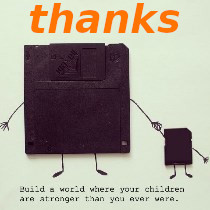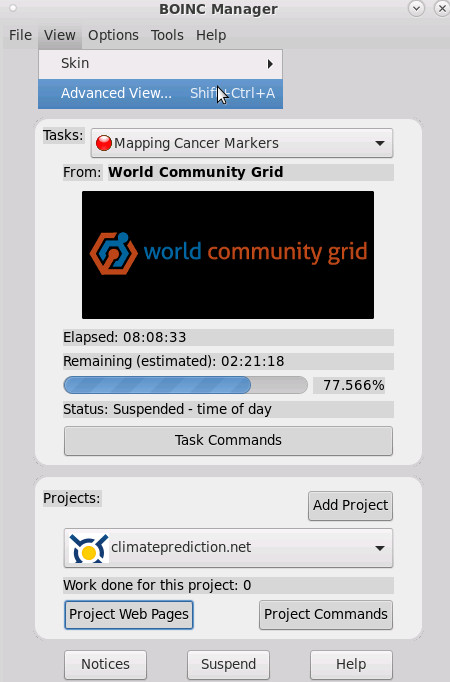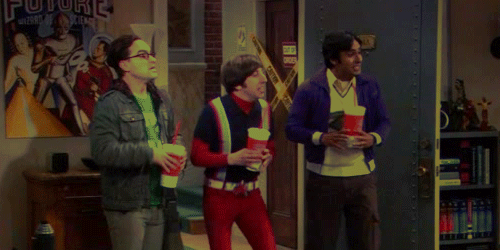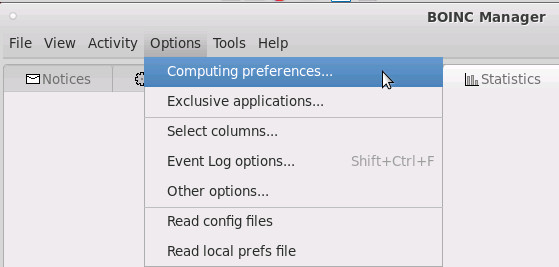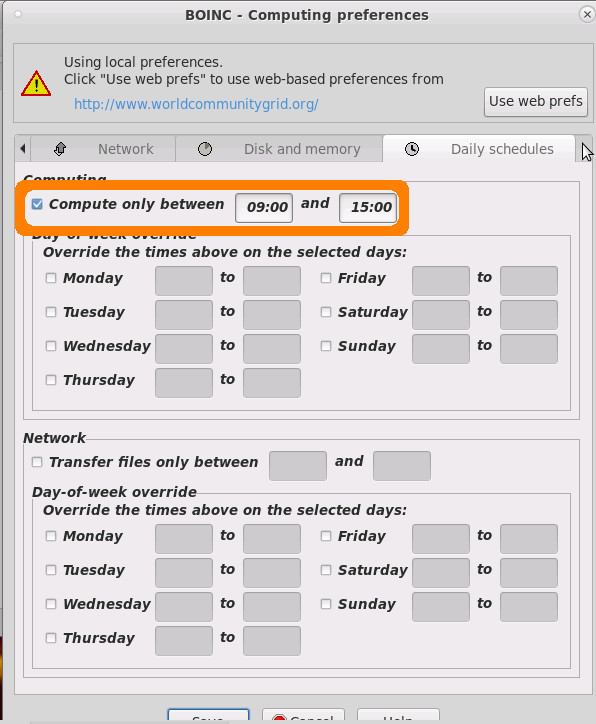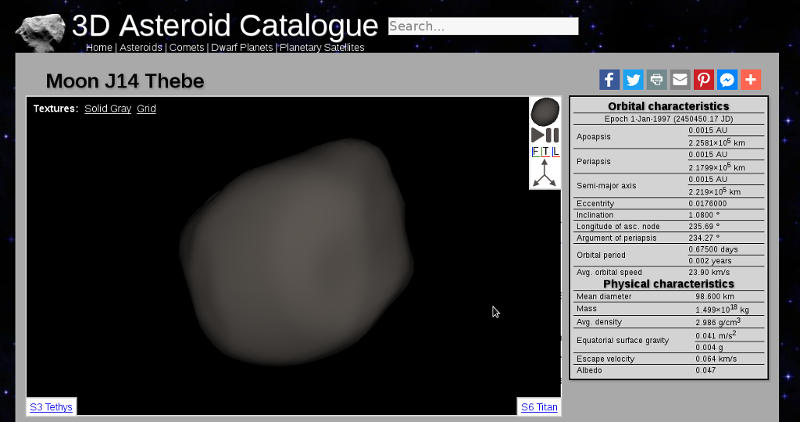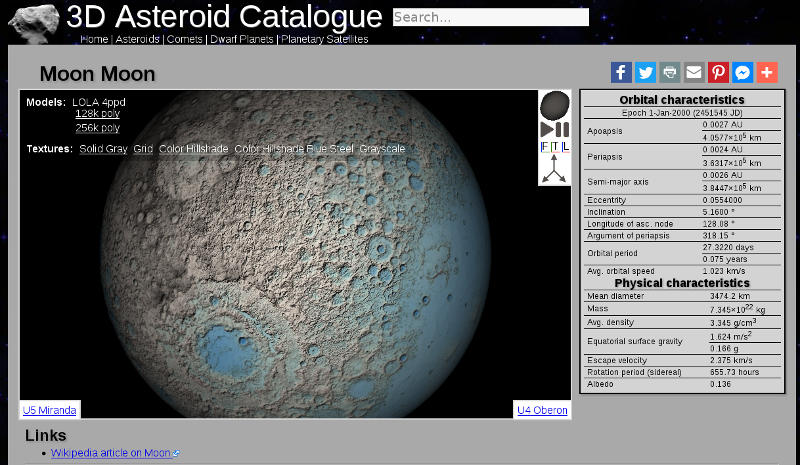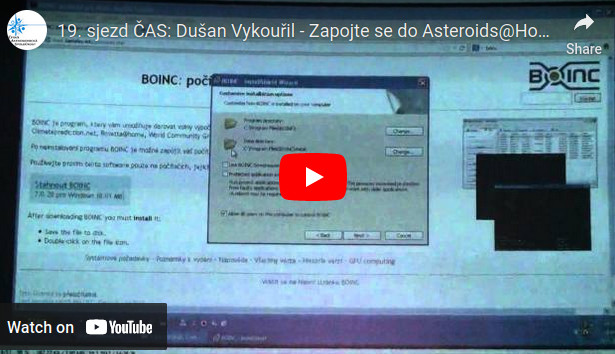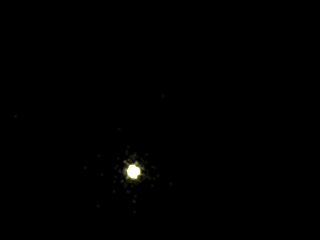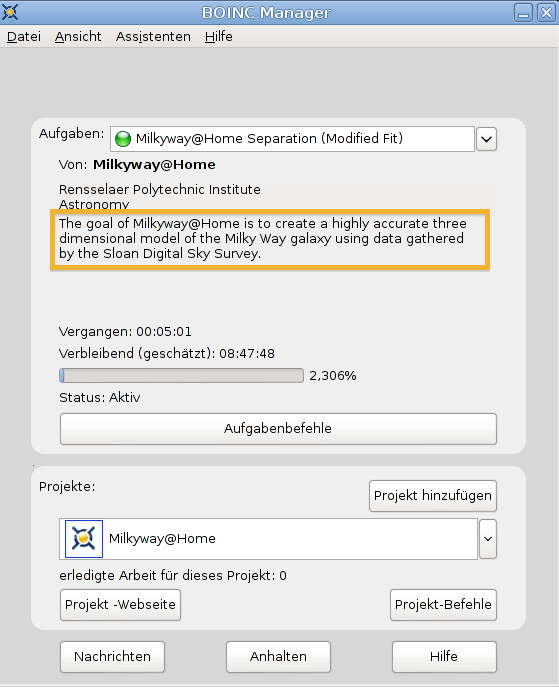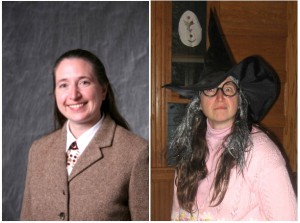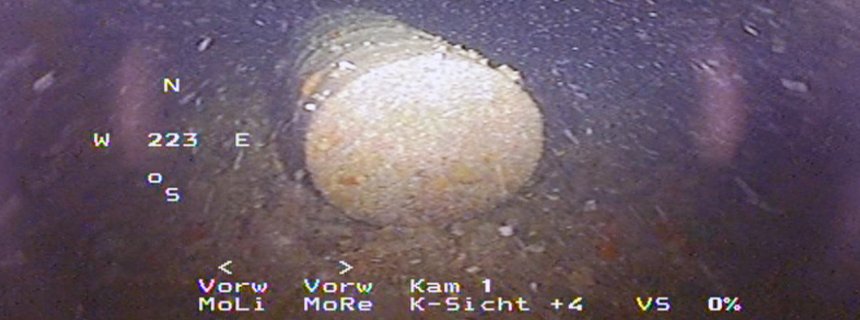setup boinc
boinc is a distributed computing system that uses CPU and GPUs to crunch on hefty mathematical problems and allows users with spare (SOLAR?) energy and CPU capacity to contribute to scientific results (hope so).
# tested on Debian 12 # install su - root apt update apt-get install boinc-client boinc-manager # as root start the service /etc/init.d/boinc-client start [ ok ] Starting BOINC core client: boinc. [ ok ] Setting up scheduling for BOINC core client and children: idle,. Ctrl+D # log off root # start the manager (if a desktop is installed) boincmgr # the setup assistent should allow you to connect to your existing accounts or join a project creating a new account # to autostart boinc simply create rc.local # with the statup command # howto start stop boinc service /etc/init.d/boinc-client start # howto stop the boinc service /etc/init.d/boinc-client stop # howto restart boinc service /etc/init.d/boinc-client restart # report on status of the service (is it running or not?) /etc/init.d/boinc-client status
signup to project
if a desktop is installed, after boinc is installed, open a terminal (non root) and type in:
boincmgr
this should bring up the boinc manager gui
and asks the user to join a project.
if not previously joined simply click: “register new (user)” and type in (any) mail and password (this is the registration process)
congratz! 😀 user are done and CPUs will crunch away with 100% at the chosen project
official documentation: setup boinc for debian (might be optional)
We recommend installing the BOINC client directly from the Ubuntu/Debian repositories.
In a terminal window, run the following command:
sudo apt install boinc-client boinc-manager
Set the BOINC client to automatically start after you restart your computer:
sudo systemctl enable boinc-client
Start the BOINC client:
sudo systemctl start boinc-client
Allow group access to client access file:
sudo chmod g+r /var/lib/boinc-client/gui_rpc_auth.cfg
Add your Linux user to the BOINC group to allow the BOINC Manager to communicate with the BOINC client:
sudo usermod -a -G boinc $USER
Allow your terminal to pick up the privileges of the new group:
exec su $USER
In the same terminal window, start the BOINC Manager:
boincmgr -d /var/lib/boinc-client
When BOINC Manager opens, select World Community Grid from the list of BOINC projects then enter your World Community Grid username and password.
When these steps are completed, you should see a screen to confirm that you’ve been successfully signed up to World Community Grid.
creditz: https://www.worldcommunitygrid.org/download/debian
How to limit CPU usage?
actually boinc is not very good at ressource management, so it might be best to run it as a KVM VM or a container with only 2x CPUs assigned (for example)
But the user can try boinc’s own resource limit function via advanced (a lot of dialogues don’t work in simple mode)
still ongoing projects:
predict Asteroid shapes@home
now with fancy WebGL 3D Viewer:
https://en.wikipedia.org/wiki/Thebe_(moon)
browse DAMIT Database: http://astro.troja.mff.cuni.cz/projects/asteroids3D/web.php?page=db_browse
Project Asteroids@home
Asteroids@home is a volunteer distributed comhttps://dwaves.de/2015/02/26/gnu-linux-how-to-setup-boinc-decentralized-computing-for-science-grid-for-example-project-asteroidshome-from-czech-republik/puting project developed at the Astronomical Institute,Charles University in Prague, in cooperation with Radim Vančo from CzechNationalTeam. The project is directed by Josef Durech. It runs on the Berkeley Open Infrastructure for Network Computing (BOINC) software platform and uses power of volunteers’ computers to solve the lightcurve inversion problem for many asteroids.
Why distributed computing?
With huge amount of photometric data coming from big all-sky surveys as well as from backyard astronomers, the lightcurve inversion becomes a computationaly demanding process. In the future, we can expect even more data from surveys that are either already operating (PanSTARRS) or under construction (Gaia, LSST). Moreover, data from surveys are often sparse in time, which means that the rotation period – the basic physical parameter – cannot be estimated from the data easily. Contrary to classical lightcurves where the period is “visible” in the data, a wide interval of all possible periods has to be scanned densely when analysing sparse data. This fact enormously enlarges the computational time and the only practical way to efficiently handle photometry of hundreds of thousands of asteroids is to use distributed computing. Moreover, the problem is ideal for parallelization – the period interval can be divided into smaller parts that are searched separately and then the results are joined together.
Why to study asteroids?
- The large discrepancy between the huge number of all known asteroids and the small number of those with known basic physical parameters (shape, spin, period) is a strong motivation for further research.
- Knowing the physical properties of a significant part of the asteroid population is necessary for understanding the origin and evolution of the whole solar system.
- Thermal emission of small asteroids can significantly change their orbit (Yarkovsky efect), which can be crucial for predicting the probability of their collision with the Earth. To be able to compute how the thermal emission affects the orbit, we have to know the spin (and also the shape, to a certain extent) of the object.
Scientific objectives
The aim of the project is to derive shapes and spin for a significant part of the asteroid population. As input data, we use any asteroid photometry that is available. The results are asteroid convex shape models with the direction of the spin axis and the rotation period. The models will be published in peer-reviewed journals and then made public in the DAMIT database.
Basics about asteroids
Asteroids are small bodies of the solar system. Most of them orbit between Mars and Jupiter in the so-called main belt. Some of them, however, have orbits that come close to the Earth’s orbit or even cross it. These are called near-Earth asteroids. Asteroids can be described as irregular solid bodies without any atmosphere or coma. Their size ranges from hundreds of kilometers for the largest ones to meters for the smalles ever detected.
So far, there are almost half a million known asteroids – we know their orbit in the solar system (by measuring their position at different times) and their approximate size (by measuring their brightness and knowing their distance). To learn more about their physical properties, other observing techniques have to be used. One of them is photometry – we measure brightness variations caused by rotation. By this technique, rotation periods were derived for several thousands of asteroids
Asteroid lightcurves
Similarly to planets, asteroids shine by the reflected sunglight. Because the distance of an asteroid to the Sun and the Earth changes as the asteroid and the Earth orbit the Sun, the brightness of the asteroid also changes with time. Apart from this easily predictable change of brightness, asteroids also exhibit brightness variations that are caused by their irregular shape and their rotation.
Asteroids rotate, the cross-section of the visible and illuminated part of their surface varies with time and so varies their brightness. This brightness variation is called a lightcurve. By measuring lightcurves, we can measure asteroid rotation periods. The shape of a lightcurve depends on the mutual geometry of the Sun, the Earth, and the asteroid (which is known because we know the orbit of the asteroid in the solar system), and on asteroid spin axis orientation and shape (which we do not know).
Lightcurve inversion
If there are enough lightcurves from different geometries available, the shape model, the spin axis direction, and the rotation period of an asteroid can be derived. For example, an almost spherical asteroid would be constantly bright, whereas an elongated asteroid would exhibit large brightness variations when viewed edge-on and small variations when viewed pole-on. The process of the shape and spin reconstruction from lightcurves is called lightcurve inversion. From a mathematical point of view, lightcurve inversion is a nice and interesting example of an inverse problem. It can be shown that a uniqe convex shape model of an asteroid can be derived from its lightcurves. From an astronomical point of view, the lightcurve inversion method enables us to reveal basics physical characteristics of individual asteroids by inverting their lightcurves. So far, models for more than 200 asteroids have been derived this way. They are stored in the Database of Asteroid Models from Inversion Techniques (DAMIT).
Rosetta@Home: for health & science
from the very institute that created BOINC
https://boinc.bakerlab.org/rosetta/
By running Rosetta@home on your computer when you’re not using it you will speed up and extend our efforts to design new proteins and to predict their 3-dimensional shapes. Proteins are the molecular machines and building blocks of life. You can read more about protein folding and design here.
Follow us on Twitter: @rosettaathome
Rosetta@home is not for profit.
Join Ralph@home to help improve this project.
Milkyway@Home
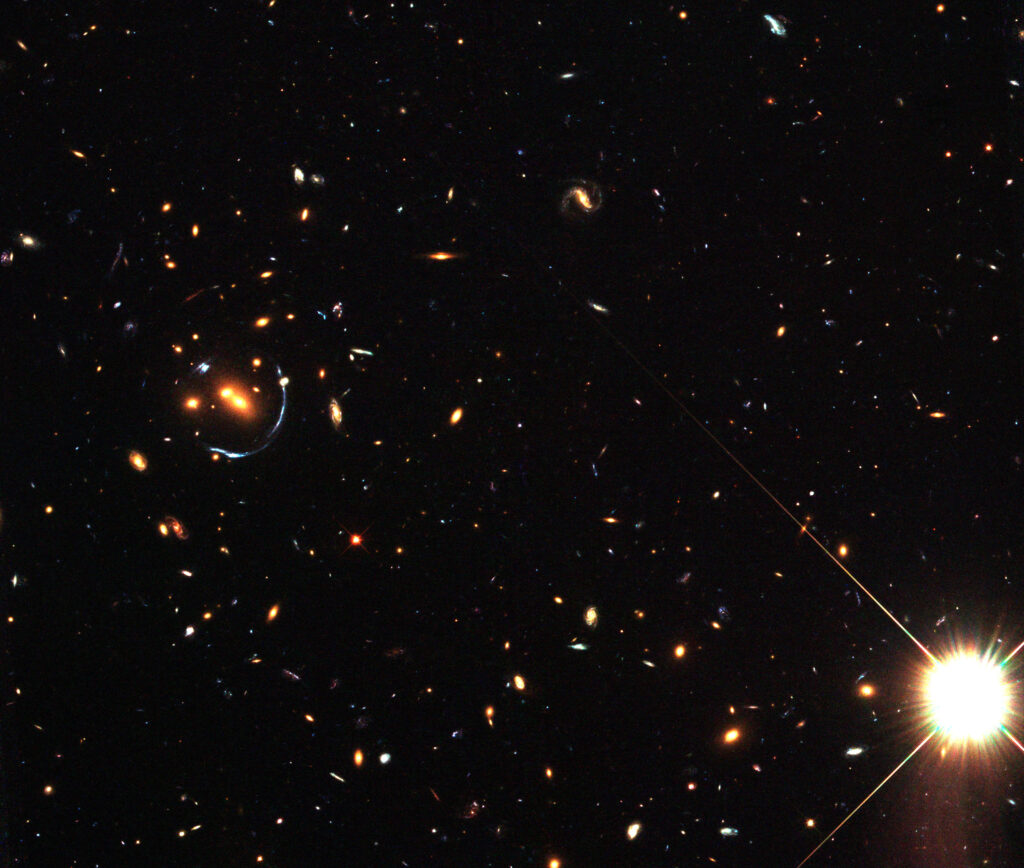
This NASA/ESA Hubble Space Telescope image shows remarkable structures in a galaxy cluster around an object called LRG-4-606. LRG stands for Luminous Red Galaxy, and is the acronym given to a large collection of bright red galaxies found in the Sloan Digital Sky Survey (SDSS). These objects are mostly massive elliptical galaxies composed of huge numbers of old stars. It is sobering to contemplate the sheer number of stars that this image must contain — hundreds of billions — but it also features one of the strangest phenomena known to astronomers. This particular red galaxy and its surrounding galaxies happen to be positioned so that their strong gravitational field has a dramatic effect. Left of centre in the picture, blue galaxies in the background have been stretched and warped out of shape into narrow, pale blue arcs. This is because of an effect called gravitational lensing. The galaxy cluster has such a strong gravitational field that it is curving the fabric of space and amplifying the starlight from much more distant galaxies. Gravitational lensing normally creates elongated arcs and here, unusually, the alignment of the galaxies has made the separate arcs combine to form a half-circle. This picture was assembled from a collection of exposures in visible and near infrared light taken with Hubble’s Wide Field Camera 3. The field of view is approximately 3 by 3 arcminutes. https://en.wikipedia.org/wiki/Sloan_Digital_Sky_Survey#/media/File:LRG-4-606.jpg
“The goal of Milkyway@Home is to create a highly accurate three dimensional model of the Milky Way galaxy (the dark matter in it) using data gathered by the Sloan Digital Sky Survey.”
“MilkyWay@home is a collaboration between the Rensselaer Polytechnic Institute‘s departments of Computer Science and Physics, Applied Physics and Astronomy and is supported by the U.S. National Science Foundation. It is operated by a team that includes astrophysicist Heidi Jo Newberg and computer scientists Malik Magdon-Ismail, Bolesław Szymański and Carlos A. Varela.” (src: wiki)
http://milkyway.cs.rpi.edu/milkyway/science.php
http://milkyway.cs.rpi.edu/milkyway/home.php
MilkyWay@home sounds very interesting:
- “create a highly accurate three dimensional model of the Milkyway galaxy using data gathered by the Sloan Digital Sky Survey”.
- sounds like a “google maps” of the milky ways? (hope it will be Open Source and Open Data!)
- will it look like this? https://youtu.be/r97GWqMD7_c
- https://skfb.ly/6QV7A
- (it is a probably not accurate 3D model that a 3D artist did, but it looks just great & it run’s in the user’s browser and supports VR neat 🙂
- checkout this more “professional” universe simulation software http://universesandbox.com/scottmanley discover the universe like a video game 🙂
- it is more about inspiring people, if VR is brings any practical advancements is still in question https://sg.news.yahoo.com/vr-milky-way-model-open-100210956.html
- COOL! 🙂 make your server work on that! GNU Linux way! 🙂
Rensselaer Polytechnic Institute Astronomy: http://www.rpi.edu/dept/phys/
who is behind this: AHA! http://homepages.rpi.edu/~newbeh/
hint: it might run much more efficient on GPUs than CPUs!
Heidi Newberg
Professor, Department of Physics, Applied Physics, and Astronomy
National Geographic picture – 10/1999
https://en.wikipedia.org/wiki/Heidi_Jo_Newberg
Dear MilkyWay@home supporter,
The good news is, we made some great progress this past year. We have pushed out new and better analysis software that does a better job of
measuring the stellar density in the Milky Way, and can run simulations of dwarf galaxies disrupting the Milky Way. This new software, along with your crunching power (thank you!) has allowed us to make several new discoveries that are small steps towards our long-term goal of mapping the stellar density of the outer parts of the Milky Way (called the stellar halo) and figuring out how all of the dark matter is distributed in the Milky Way galaxy. We managed to implement on-line badges for those who contribute their computing cycles (and electricity) to our project. We can’t do it without you guys.
We will be losing our senior group members (Matt Newby and Jef Thompson) at the end of this summer, but we have some great new students
(welcome Sidd Shelton and Maia Marchetti) stepping in. That is life in the university – students come, learn, grow, contribute, and leave. Our policy is: students who leave are required to answer questions from my students for the rest of their lives. That is how we keep continuity in this program.
The low point this year came last month when I was informed that the US National Science Foundation would not renew my grant for
MilkyWay@home this year. It was quite a blow, but it is becoming more and more common for productive scientists to lose their funding, at least for a time. I plan to submit additional funding proposals over the next year, and hopefully we have federal funding again in the future. But for now I am feeling like Jodie Foster in the movie Contact. I need to find private funding to keep my program alive.
If you are financially able and willing to help us find dark matter in the Milky Way, I would really appreciate your help. Please check out our
fundraising page and help us fund what I hope is a gap year.
Best Wishes,
Heidi Jo Newberg
see some pictures: Milkyway@home Science Summary.pdf
Future Plans
In the future, we hope to extend MilkyWay@home’s ability to model progenitors. We are currently working on extending the current algorithms to allow for the modeling of multiple dwarf galaxies. In doing so, we introduce many new parameters to be optimized. To constrain these parameters data from multiple tidal streams must be used. Therefore, we must also extend to allow for the use of data from multiple streams. We are also working on expanding GPU utilization.
The current best model for the Milky Way potential is that of a triaxial halo, though this model has the Galaxy rotating on the intermediate axis. Once we are able to simulate multiple dwarf galaxies, constrained by multiple streams, we can test more physical potential models for the Milky Way.
Links & Papers (PDFs):
follow the (RSS) news:https://milkyway.cs.rpi.edu/milkyway/rss_main.php
https://wcl.cs.rpi.edu/papers/Nbody_ApJ_19.pdf
https://milkyway.cs.rpi.edu/milkyway/forum_thread.php?id=3145&postid=70502#70502
https://wcl.cs.rpi.edu/papers/Nbody_ApJ_19.pdf
https://iopscience.iop.org/article/10.3847/1538-4365/aadb92/pdf
https://iopscience.iop.org/article/10.3847/1538-4357/ab4f72/pdf
https://arxiv.org/pdf/2006.08764
https://milkyway.cs.rpi.edu/milkyway/forum_thread.php?id=2619&postid=69897#69897
previous (finished?) boinc projects
http://www.climateprediction.net/weatherathome/weatherhome-2014/
she has french (?) accent… interesting that the French care about UK floodings…
time to get those british nuclear waste barrels out of the English Channel?
Some 28,500 containers of radioactive waste were dropped into the English Channel between 1950 and 1963. Experts have assumed that the containers had long since rusted open, spreading the radioactivity throughout the ocean and thus rendering it innocuous. But a new investigative report from the joint French-German public broadcaster ARTE has concluded that the waste is still intact at the bottom of the sea.
As part of an investigative report set to air on April 23, affiliated German public broadcaster SWR sent an unmanned, remote-controlled submarine into the canal’s depths, where they discovered two nuclear waste barrels at a depth of 124 meters (406 feet) just kilometers from the French coast.
Jettisoned by both the British and the Belgians, the containers hold some of the estimated 17,224 metric tons of low-level radioactive waste dumped in the English Channel’s underwater valley known as Hurd’s Deep, just north of the isle of Alderney, according to the International Atomic Energy Agency (IAEA). The British barrels are estimated to have contained 58 trillion becquerels (units of radioactivity), while the Belgian barrels held some 2.4 trillion bequerels. By way of comparison, the European Union’s limit for drinking water is 10 becquerels per liter.
“We think that there are still many more undamaged barrels below,” SWR journalist Thomas Reutter told SPIEGEL ONLINE, adding that it was very unlikely that the broadcaster’s expedition uncovered the only intact containers in existence.
Avoid CO2 use the Fusion Reactor in the Sky: 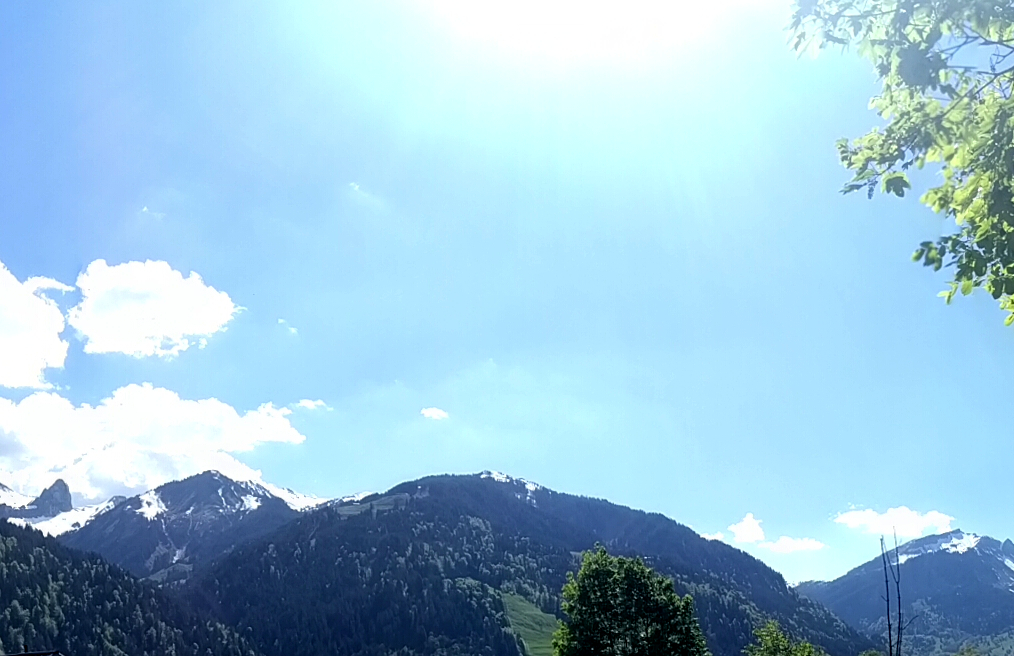 (if the 2 is pronanced German than it even rhymes)
(if the 2 is pronanced German than it even rhymes)
As a lot of fossil fuel is (still in 2021!) used to produce electrictiy, it is possible and recommended to set boinc client to only compute during daytime (when there is the highest %percentage% of solar electrictiy in the grid)
liked this article?
- only together we can create a truly free world
- plz support dwaves to keep it up & running!
- (yes the info on the internet is (mostly) free but beer is still not free (still have to work on that))
- really really hate advertisement
- contribute: whenever a solution was found, blog about it for others to find!
- talk about, recommend & link to this blog and articles
- thanks to all who contribute!
